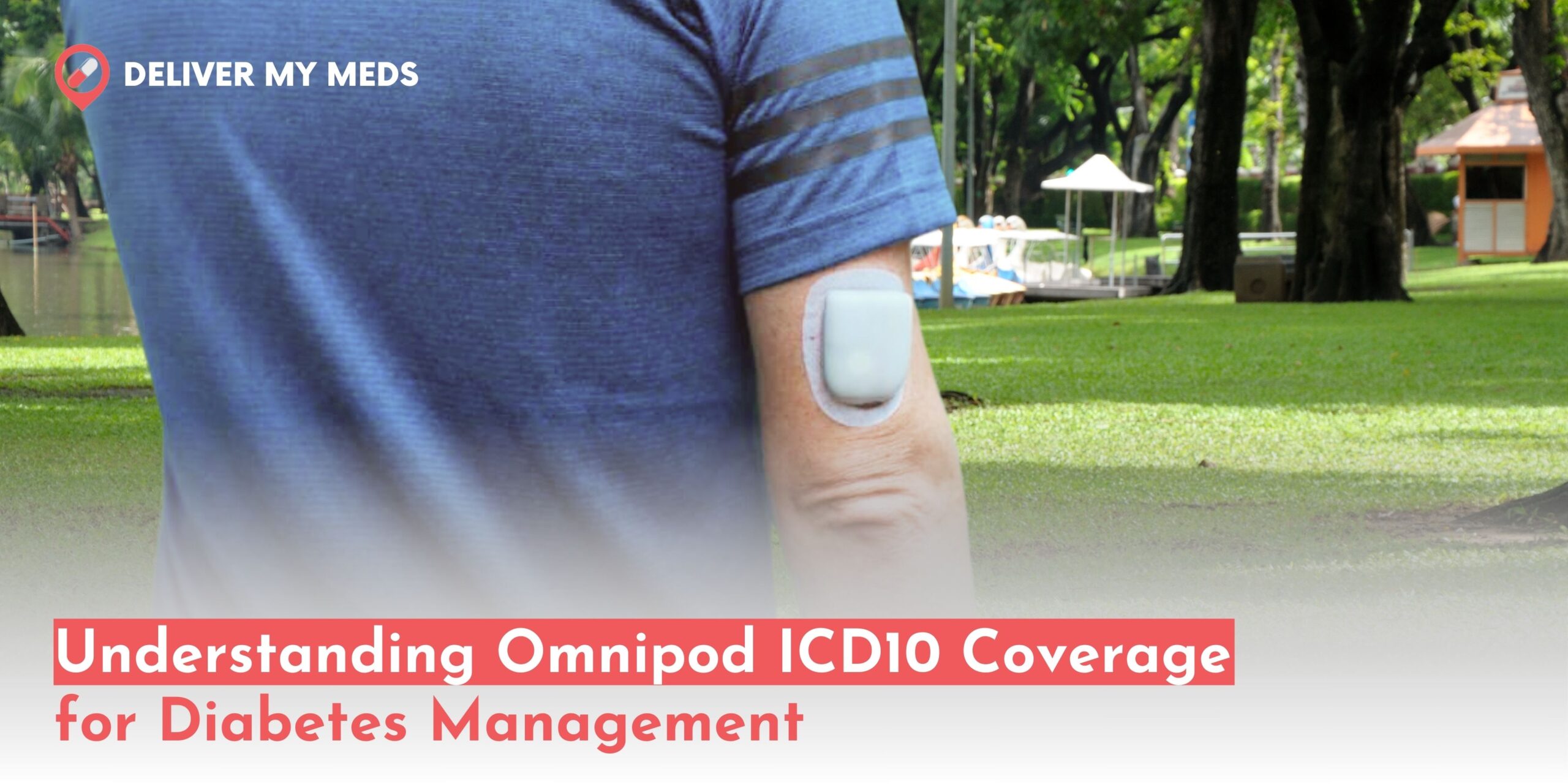
The Omnipod Insulin Management System is well known as one of the most user-friendly and modern ways to deliver insulin- the tubeless, discreet, and flexible approach to diabetes. As patients increasingly look toward this convenient technology, their healthcare providers and themselves often must seek clarification, particularly on ICD10 coding for reimbursement. This blog explains the ins and outs of Omnipod ICD10 coverage and how to work with insurance needs and get the necessary approvals.
What is Omnipod?
The Omnipod Insulin Management System is a non-invasive, external pump that diabetic people may use and offers an alternative to traditional insulin pumps. While most of the tubing is from the pump, Omnipod delivers insulin wirelessly through a small, adhesive pod, so it’s easy to apply and has more flexibility and greater freedom of movement. It is a life-changer for type 1 diabetic patients and many others who have type 2 diabetes because it provides them with the most discreet option that enhances the quality of their daily lives.
Importance of ICD-10 Codes in Medical Billing
ICD-10 is a common global diagnostic code for all medical purposes relating to disease diagnosis and reporting health conditions. If Icd-10 is used, the patient’s charge will be submitted appropriately to the insurer so that the claim is processed quickly. This may make it easier, the processing faster, and there won’t be any out-of-pocket expense for the patient.
Proper coding from care providers that meets the standards of compliance also diminishes the possibility of denied claims and provides uniform cash flow in practice.
Omnipod ICD10 Coverage for Diabetes Management
Insurance companies require specific ICD-10 codes linked with diabetes to cover Omnipod. Some of the standard ICD-10 codes associated with this coverage are as follows:
Type 1 Diabetes Mellitus:
E109: Type 1 diabetes mellitus without complications
E1065: Type 1 diabetes mellitus with hyperglycemia
E1010: Type 1 diabetes with ketoacidosis without coma
Type 2 Diabetes Mellitus:
E119: Type 2 diabetes mellitus without complications
E1165: Type 2 diabetes mellitus with hyperglycemia
E11.00: Type 2 diabetes with hyperosmolarity, without nonketotic hyperglycemic hyperosmolar coma (NKHHC)
When using insulin, patients may require additional codes to ensure proper diagnosis.
ICD-10 Code Z79.4: Long-term (current) use of insulin
These codes indicate the medical necessity of insulin management systems, which justifies using Omnipod. Proper diagnosis and coding must be ensured since they are significant in having the Omnipod covered via insurance.
How Omnipod Coverage Works with Insurance Providers
Insurance companies consider the diagnosis and medical requirements while evaluating claims. The proper application of ICD-10 codes can help the healthcare provider state a reason for Omnipod, which may facilitate the patient’s acceptance by the authority. Medicare, Medicaid, and private insurance plans will cover it. However, most require authorization before coverage and proof that the patient needs a continuous insulin delivery system.
- Medicare: It is generally covered under the Part D plan for Medicare patients with insulin usage with the pump. Through a Medicare Part D plan, you can decrease the cost of your Omnipod 5 g6 intro kit or Omnipod DASH prescription, which has preferred coverage during open enrollment.
- Medicaid: It varies from state to state. Medicaid usually requires that the patient have prior authorization; you should check your benefits with your state.
- Private Insurance: All private insurance companies cover Omnipod, give a physician orders for it, and provide documentation under the ICD-10 that clearly states diabetic management.
Actions of Patients and Providers in Ensuring Easy Omnipod Coverage
Of course, insurance companies differ, but in general, here are a few practical steps to make coverage easier:
- Consult with Healthcare Provider: Your healthcare provider should discuss ICD-10 coding and coverage options with you at the earliest stage of the treatment plan. Clear documentation of medical necessity will strengthen the claim.
- Check benefits with your insurance: Patients should check with their insurance company for specific coverage information, such as documentation requirements and ICD-10 codes.
- Submit Pre-authorization request: Most companies require pre-authorizations, so ensure all medical records, ICD-10 codes, and prescription details are submitted with zero mistakes to avoid any delays in the process.
- Tracking Claims and Follow-Up: All patients and providers must review the status of the claim. If a claim is being denied, look for why it was denied and have the insurance provider finish the missing documentation or resubmit once proper documentation is on the submission.
Benefit of Accurate ICD-10 Coding for Coverage under Omnipod
There are various benefits to the proper application of ICD-10 codes for the patient and healthcare providers. The benefits are as follows:
Less Claim Denial: When Omnipod ICD 10 codes are applied appropriately, claims are denied less frequently, which reduces delay and increases access to the Omnipod system.
Quicker Reimbursement: Proper coding leads to timely payments, which smooths the process for healthcare providers and reduces out-of-pocket expenses for patients.
More Satisfied Patients: Patients who do not experience a long period of billing issues and high out-of-pocket healthcare costs tend to be more satisfied with their care. This satisfaction leads them to develop good relations with their providers.
Incorporation of Diabetes Mellitus ICD 10 Codes for coverage
Proper incorporation of the diabetes mellitus ICD 10 code is required for the Omnipod Insulin Management System to be accepted by most insurance providers. ICD-10 codes frequently used for diabetes include E10 diabetes mellitus type 1. Specific ICDs can be further documented using complications such as hyperglycemia or diabetic ketoacidosis without coma, E10.65 or E10.10, respectively. In Type 2 Diabetes Mellitus, the relevant codes are E11 and its subgroup such as E11.9 for diabetes without complication or E11.65 for Type 2 diabetes with hyperglycemia. More importantly, Z79.4 long-term use of insulin is an indispensable indicator that defends the medical justification behind the use of a pump like Omnipod. Appropriate use of those codes will ensure that the patients will get reimbursement and avoid denied claims or undue delay in approving the necessary treatments.
Conclusion
OmniPod allows patients the option of up-to-date, accessible management of their diabetes independently and with some flexibility and control over determining how to take care of themselves. You will be more likely to get covered and save costs if you understand the demand for appropriate ICD-10 coding and learn about how coverage is determined. If OmniPod is adequately documented and communicated beforehand, it should be achievable and effective in maintaining the best management of your diabetes. You can buy Omnipod 5 and Omnipod Dash pods from our website at Delivermymeds.com at an affordable price.



